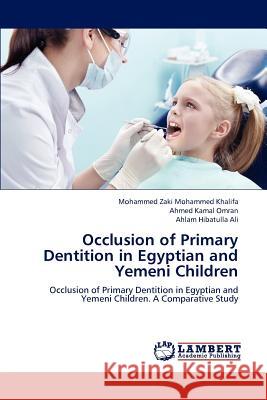Occlusion of Primary Dentition in Egyptian and Yemeni Children » książka
Occlusion of Primary Dentition in Egyptian and Yemeni Children
ISBN-13: 9783659306143 / Angielski / Miękka / 2012 / 140 str.
This research was designed to provide an insight into the state of occlusal patterns, tooth size and arch dimension of the primary dentition in a group of preschool Egyptian and Yemeni children. A total of 1113 Egyptian and Yemeni children aged from 3-5 years were examined. A sample of 597 children (320 girls and 277 boys) was selected from the examined children to meet the following criteria; to have a full complement of primary dentition, no missing teeth, no interproximal carious lesions and to be free from any dental malformations. Children with systemic health disease or children with tendency to bruxism and abnormal habits were excluded. For each subjects an alginate impression was taken for both dental arches and poured in dental stone, to produce dental casts on which the following measurements were recorded for each arch; tooth size, arch dimensions, occlusal relationships and the presence or absence of spacing and crowding. A digital calliper was used to record the measurements. The recorded data was tabulated and statistically analyzed with SPSS 20.0(r) (Statistical Package for Scientific Studies) for Windows.
This research was designed to provide an insight into the state of occlusal patterns, tooth size and arch dimension of the primary dentition in a group of preschool Egyptian and Yemeni children. A total of 1113 Egyptian and Yemeni children aged from 3-5 years were examined. A sample of 597 children (320 girls and 277 boys) was selected from the examined children to meet the following criteria; to have a full complement of primary dentition, no missing teeth, no interproximal carious lesions and to be free from any dental malformations. Children with systemic health disease or children with tendency to bruxism and abnormal habits were excluded. For each subjects an alginate impression was taken for both dental arches and poured in dental stone, to produce dental casts on which the following measurements were recorded for each arch; tooth size, arch dimensions, occlusal relationships and the presence or absence of spacing and crowding. A digital calliper was used to record the measurements. The recorded data was tabulated and statistically analyzed with SPSS 20.0® (Statistical Package for Scientific Studies) for Windows.











